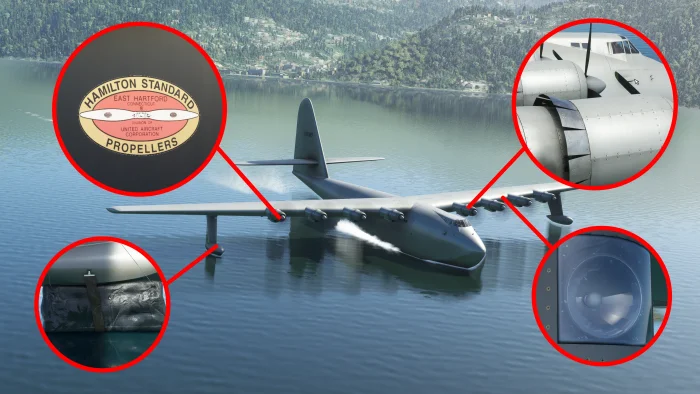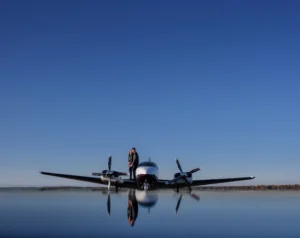The Hughes H-4 Hercules, often known as the “Spruce Goose,” stands as one of aviation history’s most intriguing and enigmatic aircraft. Designed during World War II, this colossal flying boat was a symbol of American ingenuity and ambition, though its operational history was fleeting. Despite its limited use, the H-4 Hercules remains a fascinating subject for aviation enthusiasts and historians alike.
Origins and Design
The Hughes H-4 Hercules was conceived by Howard Hughes, a maverick industrialist, and aviator. In 1942, amid the pressures of World War II, Hughes was tasked with designing a transport aircraft that could carry large numbers of troops and cargo across the Atlantic. The H-4 was designed to meet this need with unprecedented scale and capability. Constructed primarily from wood—hence the nickname “Spruce Goose”—the aircraft was an engineering marvel of its time.
With a wingspan of 320 feet, the H-4 Hercules was the largest airplane ever built at the time. Its design featured a unique combination of advanced aerodynamics and construction techniques, making it a symbol of innovation. The aircraft was powered by eight Pratt & Whitney R-4360 Wasp Major engines, which were among the most powerful of their era.

The First and Only Flight
The H-4 Hercules made its only flight on November 2, 1947, piloted by Howard Hughes himself. The flight was brief, lasting only around one mile and a few minutes, but it was enough to demonstrate the aircraft’s ability to lift off the ground. Despite its success in this single test flight, the H-4 Hercules never entered mass production or saw combat use. The end of World War II and changes in military needs rendered the aircraft obsolete before it could fulfill its intended purpose.

Legacy and Impact
While the H-4 Hercules did not revolutionize military transport as initially hoped, its legacy is significant. The aircraft remains a testament to Hughes’ vision and the technological capabilities of its time. It stands as a symbol of ambition and the pursuit of greatness, embodying the spirit of innovation that defined much of mid-20th century aviation.
Today, the Hughes H-4 Hercules is preserved as a piece of aviation history. It resides at the Evergreen Aviation & Space Museum in McMinnville, Oregon, where visitors can appreciate its grandeur and learn about its role in aviation history. The aircraft continues to capture imaginations and inspire future generations of engineers and aviators.
Conclusion
The Hughes H-4 Hercules, despite its limited flight history, remains a monumental achievement in aviation engineering. Its story is one of visionary ambition and technological prowess, highlighting the complexities of wartime innovation and the relentless pursuit of progress. As a historical artifact, the H-4 Hercules continues to fascinate and inspire, standing as a lasting legacy of Howard Hughes’ extraordinary vision.


